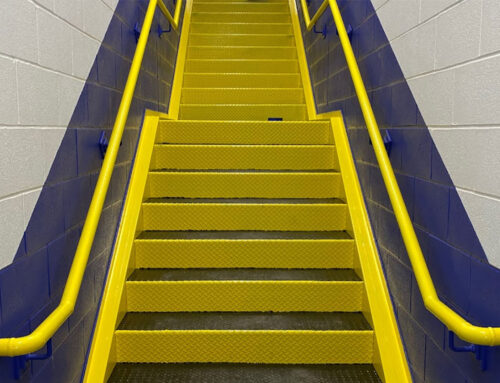A large part of painting a room is the preparation process. Taking the extra step to prepare a room for a coat of paint is critical to the success of your project.
You may think that all you have to do to paint a room is pick a paint color and grab a paint brush. However, preparing a room for a coat of paint will ensure a better finish and better final product.
This is true for all settings – whether you are painting your home, a commercial business or repainting in an industrial setting – taking a few extra steps and a little extra care goes a long way. Continue reading this guide for our tips on how to properly prepare a room for a fresh coat of paint.
First, we will cover preparing a room in your home for paint. The last half of the guide looking into industrial painting and how industrial painting contractors prepare for industrial coating projects.
Gather your tools
The first step in the preparation process for painting a room in your home is to gather your tools and supplies. We recommend the following:
- Sponge, bucket and soap
- Stripping knife, filler/filing knife
- Drop cloths or protective sheets
- Sandpaper
- gloves
The Set Up
Now it’s time for some prep work. Start by removing as much large furniture out of the room as you can. If you cannot move something out of the room, move all the furniture to the center of the room to give you access to the wall space. Cover any furniture left in the room with sheets to protect the piece from paint splatters. Remove all outlet covers and keep them to put back later.
The next step is to look at your walls. Inspect them for holes, cracks or other imperfections. Clean any cracks, holes or gaps you find before filling them in. Fill the cracks in with a filler or putty knife. After they are dry, smooth them down with a piece of sandpaper.
If the room has any peeling paint, fine sandpaper should do the trick. You want the walls to be as smooth as possible to ensure an even finish.
Clean, dry walls will ensure the smoothest paint application. We recommended wiping down the walls with a damp sponge to remove any dust or imperfections.
If you are painting a newly plastered wall, using a painting primer will get the walls ready for painting. Remove any old wallpaper by peeling it off. If it is harder to remove, a stripping knife should be a huge help. You may also soak the wallpaper with a sponge and hot water.
Part of prepping a room is also figuring out how much paint to buy by figuring out the square footage of the walls by measuring the length and width of each wall. Using masking tape on baseboards and light switches will protect them from unwanted splatters. Be sure to apply painter’s tape to switches and outlets to protect them from paint as well. Leave drop clothes on the floor for your paint trays, and any utensils you will be using.
Prepping in Industrial Facilities
The preparation process for industrial coatings is a little bit different than preparation for a residential room. Industrial painting is painting in industrial settings. These paints are high-performance coatings that are not just for aesthetic purposes. Preparing the surfaces to be painted is critical for proper adherence and application of the coating or paint.
The first step is to determine what surfaces need to be painted and the materials they are made out of. Painting in factories or other industrial facilities often involves the painting of thousands of square feet. The surfaces that need to be painted can be many different materials, including metal, cement, drywall or wood. A qualified industrial painting contractor should have the skills and equipment to prepare and coat any surface.
The next step is to inspect the condition of the surface that needs coated. Old coatings need to be removed before a new one can be applied. Any dirt, grease or contaminant on the surface also needs to be removed to prepare for the industrial coating. Any leftover contaminants can impact the performance of the coating.
Another step is to look at what is going on in the room, what conditions is the surface exposed to? Consider what chemicals or other materials the surface will come into contact with. This will ensure the proper coating is applied.
The last step is to consider the location of the surface – is it inside or outside? Ask yourself if the surface is exposed to the elements.
In Summary
Appropriately preparing a room or surface to be painted is a critical step to take in the painting process. Properly preparing walls and surfaces will ensure a smooth finish and give you the outcome you desire for your next painting project, whether that is in a residential or in an industrial setting.
Ready to Get Started?
Have questions about your project or need a quote? We’ve got someone ready to help you.



